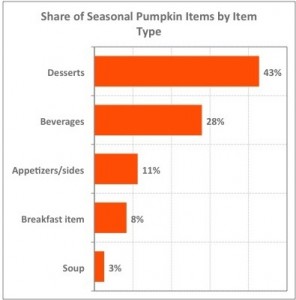Magical transformations of pumpkin
Today’s graph is almost entirely frivolous. It’s pumpkin season in the US (Halloween and Thankgiving), and Felix Salmon (a past winner of the American Statistical Association’s award for excellence in statistical reporting) is writing about how pumpkin has diversified.
‘Pumpkin,’ in this context, usually means the combination of sugar, cinnamon, cloves, and nutmeg that makes pumpkin pie palatable. The vegetable itself doesn’t really make an appearance.

On the continuing issue of how survey responses are sensitive to exact wording, it’s also worth pointing out that the Americans have a much narrower view of which vegetables qualify as pumpkins — they have to be round and orange on the outside. These, which I photographed last year in Melbourne, would not count as pumpkins in the US.
Thomas Lumley (@tslumley) is Professor of Biostatistics at the University of Auckland. His research interests include semiparametric models, survey sampling, statistical computing, foundations of statistics, and whatever methodological problems his medical collaborators come up with. He also blogs at Biased and Inefficient See all posts by Thomas Lumley »
